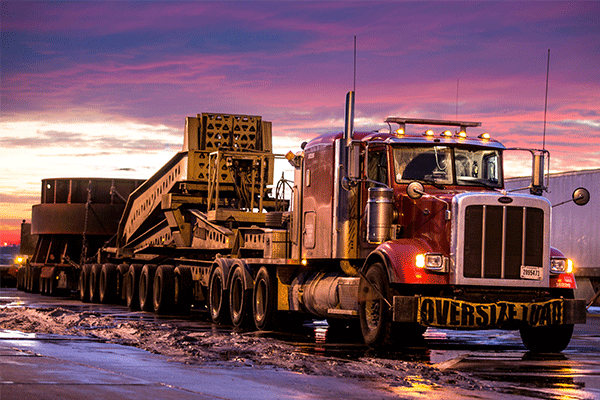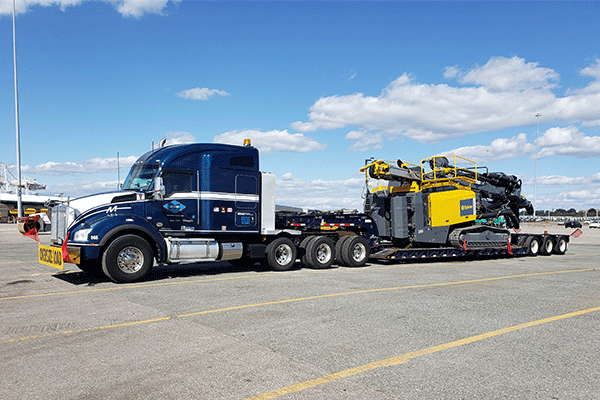Of course the distance your freight needs to travel impacts the time it takes to get there. Based on land distance alone it takes longer to get from NY to Cal than from NY to N.J. But there’s more to it than that.
The process of getting your freight to its final destination has a lot of variables and, in the interest of educating yourself, you’re looking for a fountain of information to sip from. That’s what we’re here for.
As one of the nation’s longstanding competitors in the transportation market, we’ve been educating shippers just like you for decades.
In this blog, we will outline some of the ways the distance your shipment travels impacts the timing of its delivery. At the same time, we’ll give you some tips on how to better prepare yourself, and your transportation partner, to ensure on-time delivery.
Below, I will address a couple of key factors relating to distance that dictates the time frame of your delivery. These factors are:
Your Freight’s Length of Haul
When it comes to the on-time delivery of your freight, you must always consider the distance it needs to travel. In the transportation industry, we break length of haul (LOH) into these categories:
- Short-Haul: Any load that needs to be moved less than 250 miles from its starting location falls into this category. (expected delivery: < 1 day)
- Mid-Haul: This is the category we use to classify those hauls that are 250-400 miles in distance. This type of haul is typically accomplished within one workday. (expected delivery: ≦ 1 day)
- Tweener: The LOH that falls between the mid and long-haul distances. Tweeners cover a distance range of 401-800 miles. Because of their longer distance, tweeners typically take one to two days to accomplish and are commonly referred to as “overnighters.” (expected delivery: 1-2 days)
- Long-Haul: Any load with a distance range of 801-1,200 miles falls into this category. Long-hauls typically take between two and three days to accomplish.
- Extended-Long: Just as the name suggests, extended-long involves the shipment of a product for any distance greater than 1,200 miles. With great distance comes an elongated time frame. As such, if you’re a shipper looking to send your freight these kinds of distances, you’ll need to plan accordingly. (expected delivery: 3+ days)
Generally speaking, the further your freight needs to travel to reach its destination, the more time you should allow for it to do so. A good transportation partner will consider your length of haul and map a realistic plan of action for meeting your deadlines.

Restrictions For Truck Drivers
Another distance-related element factoring into the timing of your delivery is a truck driver's ability to adjust and meet your level of urgency.
On America’s roads, truck drivers cannot drive for more than 11 hours a day. Additionally, each section of driving a truck driver finishes must be followed by a 10-hour continuous break period. Couple this with the other FMCSA truck driver restrictions and the amount of miles a truck can travel in a day dwindles significantly.
As a general rule of thumb, you should expect your shipment — when handled by one driver — to travel no more than 500 miles in a day. As such, you’ll need to coordinate your shipment with your transportation partner ahead of time to promote the efficiency of your supply chain.
Note, the moment you begin to depend on your carrier’s ability to rush the delivery of your freight is the moment you’ll begin to fail in meeting your deadline.
Using a Driving Team For Your Freight
If you’ve read this far, you may be left concerned and a little frustrated that your shipment's delivery time is subject to elements that are out of your control like governmental restrictions and LOH — don’t panic, there’s an alternative.
Through the use of a driving team, you can expedite the shipment of your freight. By a “driving team,” I'm referring to a pair of drivers who work in tandem to increase the speed of your delivery. While one driver is taking their 10-hour break, the other driver is behind the wheel.
When done correctly, this type of shipping strategy can be highly efficient. You should note that even when using a team, the nonstop transportation of freight is simply impossible. As mentioned above, in conjunction with the FMCSA's regulations, no driver can sit behind the wheel for more than 11 hours a day.
By doing some simple addition we’re able to equate that even if both drivers maximize their driving time, they’re still only able to get 22 hours of driving accomplished.
For those of you needing to move your freight over distances that fall into the “long-haul” range, this type of efficiency will very likely meet your shipping deadlines. If not, planning ahead for your shipments — especially those with extended distances — is your best bet.
The Price of a Driving Team
As you may already suspect, employing a team of drivers to move your freight comes with a heightened price point. Because of this, I would recommend that you focus on fostering transparent communication with your transportation provider. This communication will far and away be the largest factor influencing the timing of your delivery.

The Location of Your Carrier’s Trucks
The location of your shipping partner’s trucks is also a prime indicator of their ability to move your shipment on time. Having a carrier with trucks in the right place at the right time will go a long way toward successfully meeting your deadlines, no matter the distance.
Here is a quick example:
If you want to move your shipment out of Green Bay, Wisconsin but your shipping partner’s closest truck is in Madison, you may have to wait for that truck to travel the 140 miles back to Green Bay. This, of course, will result in delays to the timing of your delivery.
This all comes back to the level of communication maintained between parties. If a carrier doesn’t have a truck available in your pickup location, the delivery timing of your freight will be impacted. Therefore, the amount of work you put in on the front end, before your shipment ever leaves your door, will make a difference.
It doesn’t matter how far your freight needs to travel, if it’s not picked up on time you’re already playing from behind.
Communicate With Your Freight Transportation Provider
Everyone wants your freight to be delivered on time. You’ll never find a transportation partner whose goal is to cause you delays. The success of your business is tied to the success of theirs. They know this, you know this. It’s nice to be on the same page.
With this in mind, you should always firmly communicate your expectations to your transportation provider before you assign them a shipment.
This includes information like:
- Where your freight will start
- Where your freight will end up
- When you would like to have it picked up
- When you would like to have it delivered
- Your level of timing flexibility
This type of communication on your part will allow the shipping partner you choose to find the absolute best fit for your freight. Since they understand your goals, timeframe and expectations, getting your freight delivered promptly becomes more manageable.
The transparency and trust fostered by the clear communication of expectations from the start will ensure that when your receiver is on-site waiting for their shipment they won’t be left hanging.
Note, it is also important to set realistic expectations for the delivery timing of your freight. A good transportation partner will field your expectations and — using their expertise — truthfully indicate whether they are realistically achievable given your situation.
How You Can Ensure an On-Time Delivery of Freight
Above all else, I want you to walk away with the understanding that when it comes to the on-time delivery of your freight, no matter the distance, communication is key.
Always remember to facilitate a discussion of expectations with your transportation provider before you book a shipment. Asking questions like “Do you have trucks available in my pickup location?” and “How can a team of drivers help me reach my deadline?” will help to ensure you pick the right partner the first time.
Now that you understand delivery distance and timing, I highly recommend you check out how freight shipping costs are calculated. Understanding all of the factors (including distance) that impact the price you pay to ship your freight is the next step in getting your shipment delivered on time and on budget.




